Casting is a popular manufacturing process with numerous industrial applications because of its versatility, performance, and relatively lower cost. The debate of die casting vs sand casting is quite common. Both processes come with their set of advantages and disadvantages, so it’s hard to determine a clear winner. In the end, the right process depends on your overall requirements, design complexity, material properties, and other important factors.
In the crudest terms, the casting process melts metal and puts the molten mixture in a pre-determined mold to give it shape. So why are there so many kinds of casting processes and how are they different?
Most of the casting processes used today differ in the way the molten metal is processed and settled in the mold. Two of the most common kinds of casting are sand casting and die casting. You might have heard these terms used interchangeably, but that’s not correct.
Read on to learn more about the processes and to find out who wins in the matchup of the die casting process vs sand casting.
Die Casting vs Sand Casting: Brief Overview of the Processes
To understand which process between sand casting or die casting is better for your business, you need to know how they work and their differences. Knowing about their intricacies, requirements, and results will help you make an informed choice and select the best process for your application.
So, let’s take a brief look at both the casting processes.
1 – What Is Die Casting
As its name suggests, the die casting process comes with the requirement of a metal die that determines the final shape of the product. The process takes place under extreme pressure and temperatures. The casting process requires you to inject red-hot molten liquid into a metal mold where it’s left to solidify for a short time.
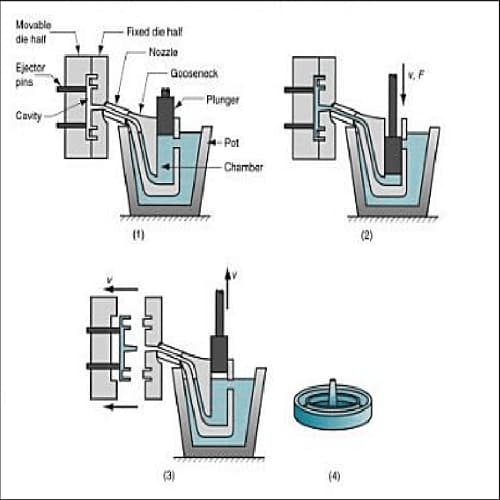
Once your product is complete, you can remove the item from the mold and get ready for the next batch. Generally, the die casting process can take from a few seconds to a few minutes depending on the size, shape, and weight of the final product.
However, you don’t have to recreate or destroy the mold as you’ll be immediately ready for the next one. This quality, along with the incredible processing speed of the process is among the biggest factors when you study sand casting and die casting differences. That’s why high-speed production environments always favor die casting.
2 – What Is Sand Casting
Sand casting is slightly different from die casting. You are still dealing with molten metal that needs to be set in your desired shape, but there is no pressure involved. The entire process of sand casting is at atmospheric pressure where you develop your molds from sand and break them apart later as well.
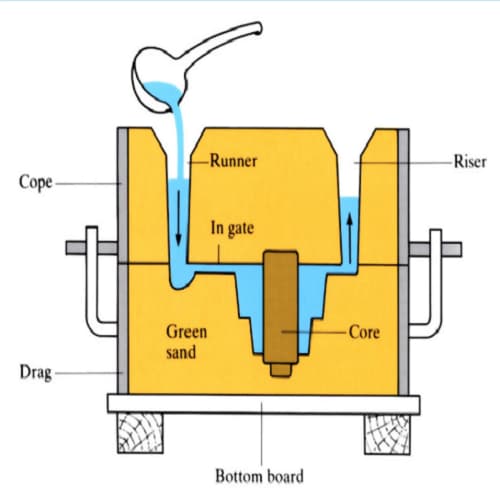
One of the biggest selling points of die casting is the immediate availability of the mold. Sand casting doesn’t have that. The mold you create will require around 10 minutes of preparation before they are ready for use.
This discrepancy makes sand casting a little less suitable for applications where you need speed. However, the process is quite cost-effective and versatile which makes it more suitable for alloys and unusual shapes. You get more freedom because the process is simple, and can handle a variety of alloys easily.
The Main Differences Between Sand Casting and Die Casting
Both sand and die casting are indeed an excellent choice for a variety of situations. They are effective, relatively fast, and can give you the result you need very soon. Therefore, deciding a clear winner while gauging sand casting and die casting differences can be extremely difficult.
There are, however, some key differences that are essential to consider while selecting between the two casting methods. Knowing about them can help as you’ll be in a better overall position to make an informed decision regarding the process you select.
Here are the 7 key differences between sand and die casting processes.
Difference One: Materials
The biggest difference between the two casting processes is the material you use to make the mold. The die casting molds are metal while sand casting molds are just like their name suggests, sand. This means better overall results. Mechanical properties of sand cast vs die cast parts are another important consideration that affects your selection.
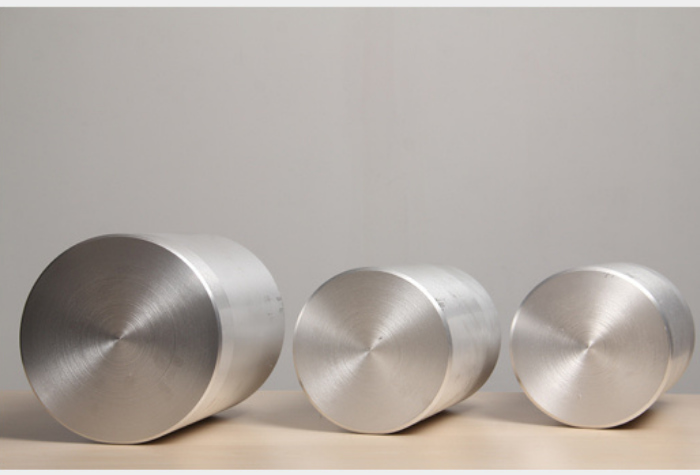
Generally, die casted products are more durable because of the pressure involved in the process. The pressure ensures that there are little to no gaps internally and keeps the entire product free from any internal defects.
Difference Two: Parts Complexity
Another difference between the results of die and sand casting is the overall complexity of the parts. Sand casting can handle much more intricate designs and larger designs compared to its counterpart. However, die casting offers much more dimensional accuracy and speed.
This means that your final decision depends on both the requirements of your product and the parameter you need to focus on. If you are planning to make something quickly in high volume, then die casting is your choice.
Difference Three: Wall Thickness
Generally, sand casting produces thicker walls. This means that you have more space to correct your inaccuracies through machining and other post-processing. On the contrary, die casting produces thinner walls but has greater dimensional accuracy. That’s why sand casting is not suitable for smaller objects with little tolerances. It becomes extremely hard to maintain consistency and deliver the best results.
Difference Four: Production Volume
One of the charms of sand casting is its simpler tooling requirements. The process takes a fraction of the time and can give you good results from the first piece. On the other hand, die casting is suitable for large volume productions because its initial tooling is more complex and time taking.
However, you must remember that die casting is a quicker process when it comes to large volumes. This means that you’ll make a thousand pieces in less time with die casting when compared to the time it’ll take you with the alternative. However, the initial tooling time you need for die casting makes the other process a better choice if you need 100 – 150 or an even smaller number of products.
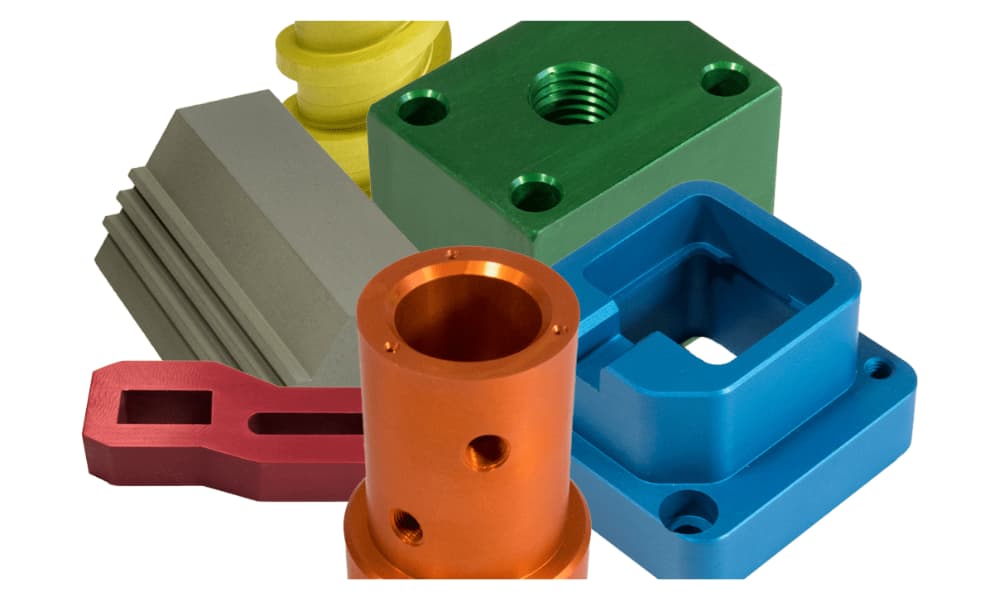
Difference Five: Surface Finish
Another important parameter is the surface finishing of your final product. The sand casting process delivers an overall coarse and rough surface and may even require some treatment after cooling down. On the other hand, the surface finish you get from die casting is excellent and doesn’t usually require any additional treatment. So, your product will be ready as soon as it comes out of the mold.
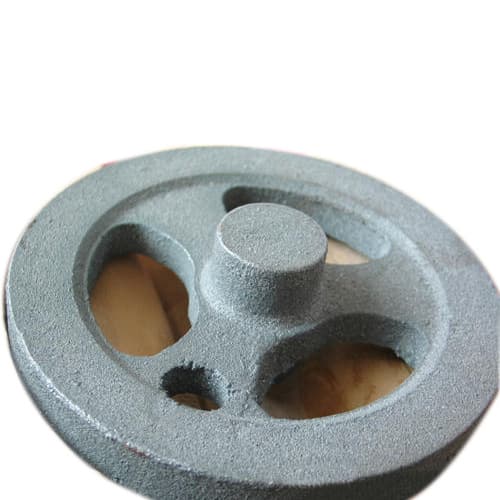
Difference Six: Cost
The cost of die casting vs sand casting is another decisive difference that determines the best process for you. Making metal mold for the die casting process obviously requires more expenses when compared with the simplicity of sand. Metal molds require more time and expertise, which naturally inflates the overall cost of this process.
Difference Seven: Applications
Both casting processes have numerous industrial applications because of their versatility, performance, and functionality. However, some sand casting and die casting differences make them suitable for certain applications.
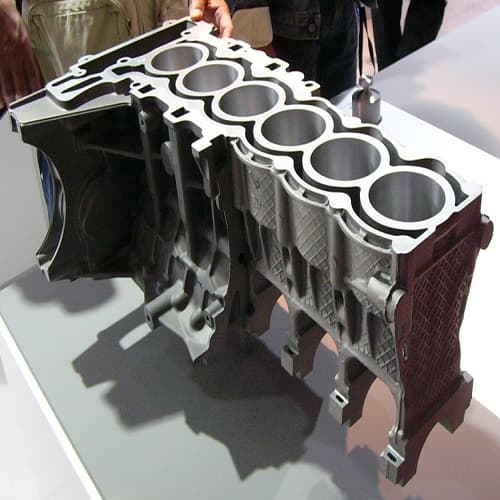
For instance, consider medical devices. They require extreme precision and finesse. Furthermore, most of them are quite small. Both of these properties make die casting the best choice for producing them. Another application difference can be the automobile sector. Some components in that industry are quite huge. Although in the die cast vs sand cast strength test, the former would win. However, sand casting is still better because of the sheer size of the parts.
RapidDirect: The Right Partner to Take You to the Top
Confused about which process to use? You’ve come to the right place. From expert guidance about what process would be best suitable for your operations and products to getting instant quotations within 24 hours about our competitive pricing, RapidDirect stands as the best partner in the industry for you to work with.
Over the years, the team at RapidDirect has worked on numerous projects and has perfected its die casting services. The advanced facilities at the company ensure timely delivery of high-quality components with consistency. RapidDirect is an ISO-certified business and maintains strict quality standards to always deliver the absolute best to its customer.
Best of all, RapidDirect also provides you with immediate feedback and integrates a completely transparent process. You never have to worry about being out of the loop with your project. So, you can maintain effective control and enjoy the highest quality standards at the most competitive price.
Contact RapidDirect today to get started.
FAQs About Die Casting vs Sand Casting
Both die and sand castings are different processes that cater to separate requirements and deliver unique results. While there is no clear answer when you ask for the winner of the die casting vs sand casting debate, the reason behind it is clear. Both processes can get the job done, and the right choice depends on your requirements.
When it comes to tooling and other requirements for the process, sand casing stands as the more affordable option compared to die casting. The former requires a low capital investment and is far more ideal for any kind of job where the budget acts as one of the main constraints. You can expect a quota of $500 to $8,000 depending on the complexity of the job. For die casting, the typical cost you can expect can range from anywhere near $8,000 to $80,000. However, die casting is far more sustainable compared to its alternative as the process manages to increase overall savings in the long run.
Die casting is the ideal choice for any complex project which requires high accuracy and comes with a low margin of error. On the other hand, sand casting provides far more flexibility with size and is the perfect choice for large parts. The biggest advantage however is not its flexibility and low cost but rather sand casting is alloy friendly and can be used with any type mostly without complications.


